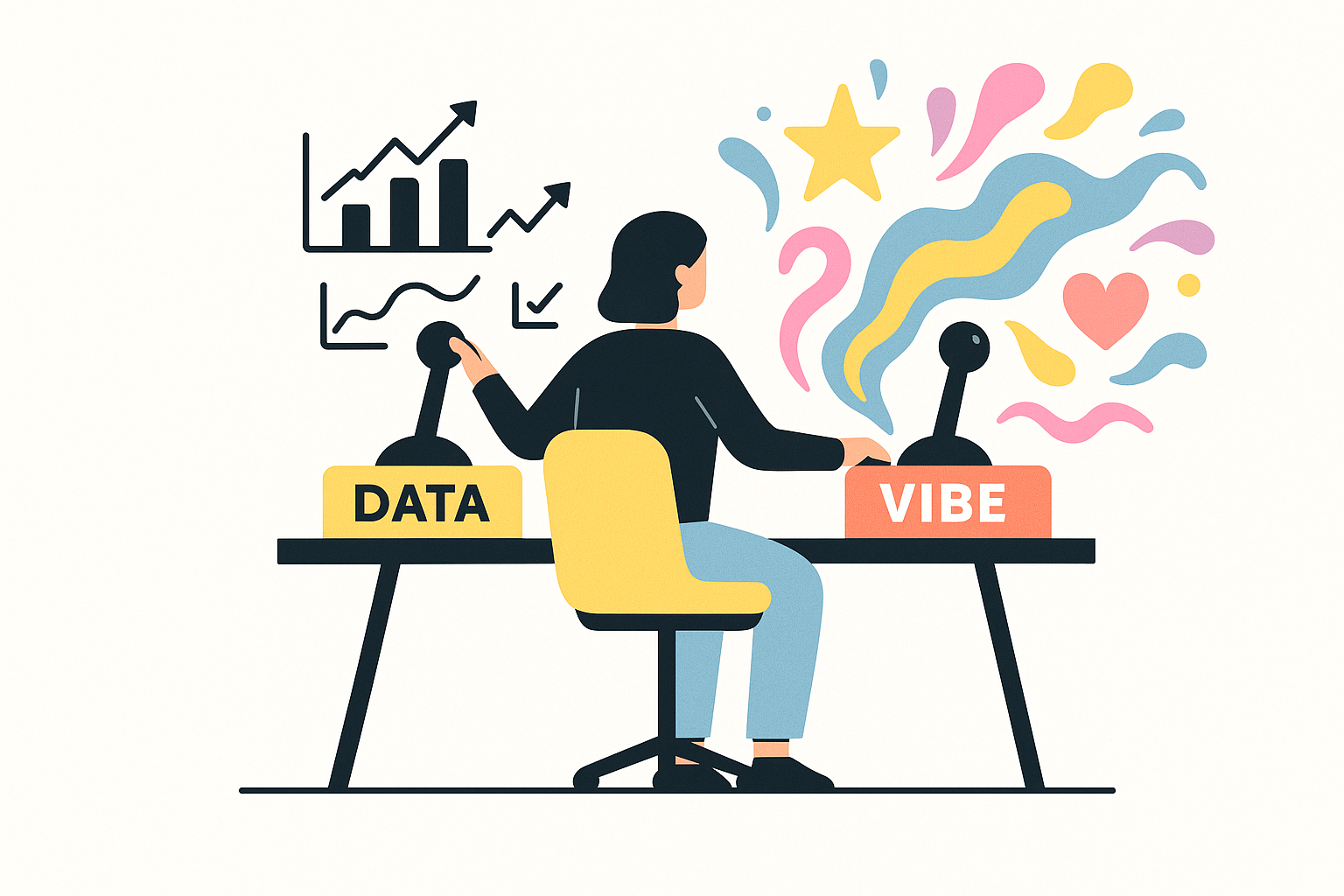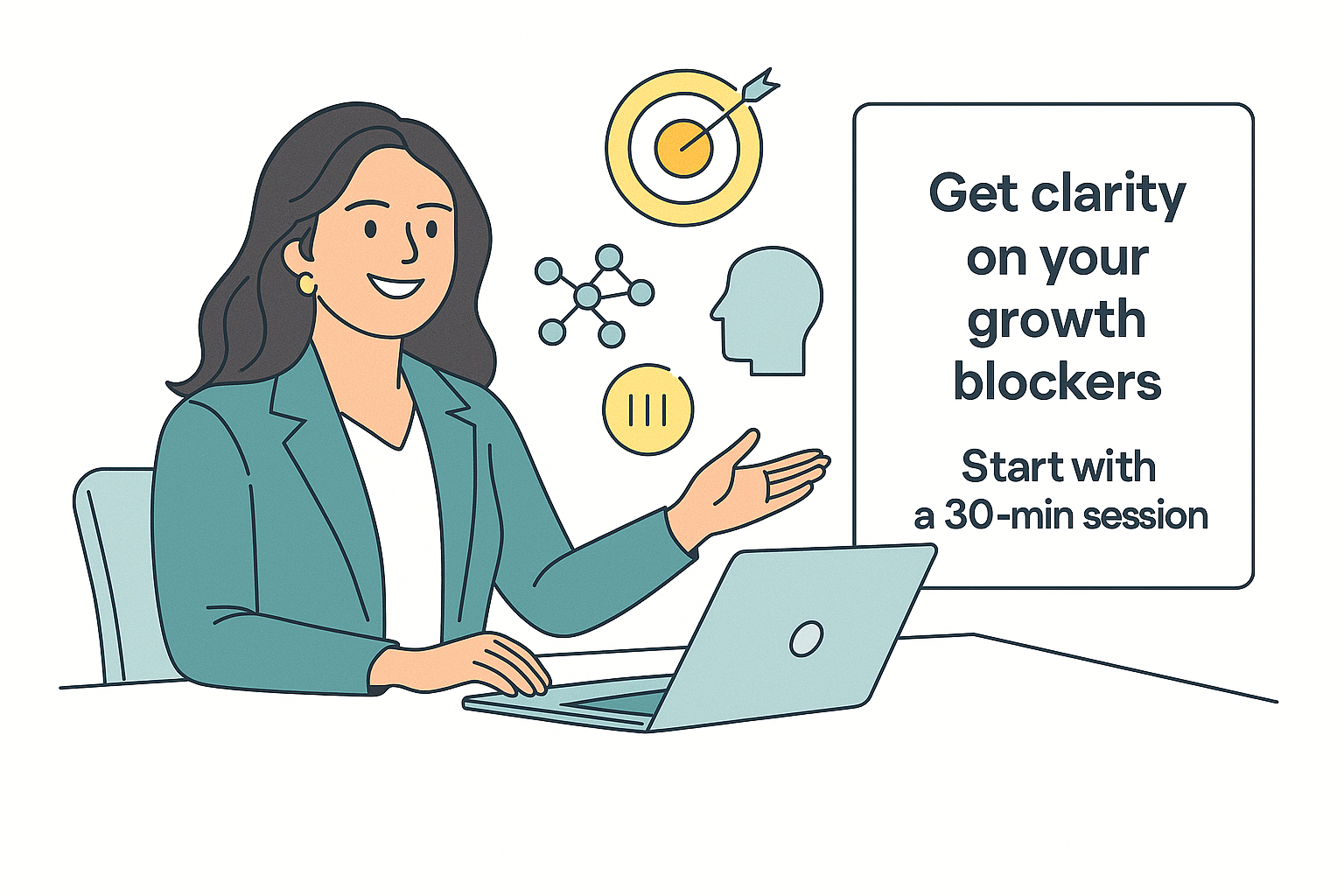Vibe marketing: new hype or old muscle with an AI boost?

AI promises speed, but data still decides what works. Here’s what vibe marketing really means for B2B
Vibe marketing is the latest term making waves in boardrooms and LinkedIn feeds. The pitch is seductive: instead of starting with data, keywords, or personas, you start with a feeling. A vibe. AI then collapses the execution gap so you can turn that vibe into assets at the speed of thought. For marketers, this sounds almost too good to be true. A world where creative sparks instantly become campaigns without the painful back-and-forth of briefs, approvals, and watered-down compromises. It feels revolutionary, but the truth is more complicated.
Where the term came from
The phrase didn’t start in marketing. It was born out of engineering. Andrej Karpathy, one of the early leaders at OpenAI, started talking about vibe coding in early 2025. His point was simple: stop obsessing over syntax and technical perfection. Instead, describe what you want in natural language, focus on the overall vibe, and let AI translate that into working code.
Marketers saw the cultural spark and, as marketers do, turned it into a trend of their own. By March and April, the phrase “vibe marketing” started creeping into Twitter threads and startup Slack groups. Greg Isenberg and other growth voices began positioning it as the next frontier: campaigns led by mood and cultural energy rather than demographics and keywords. The hype cycle took off fast.
What vibe marketing actually means
At its core, vibe marketing is about flipping the starting point. Traditional campaign planning begins with ICP research, segmentation, and data analysis. Vibe marketing says: begin with emotion. Start with joy, urgency, calm, rebellion, optimism. Once the emotion is clear, AI tools can translate that direction into outputs—copy, imagery, even full campaign frameworks—that carry that mood.
In practice, it looks like prompting Midjourney, Runway, or ChatGPT with descriptors like “bright, playful optimism for Gen Z” or “stoic, calm authority for senior IT leaders” and getting a full creative draft in return. Done well, it skips over the endless design iterations and lets you test concepts almost immediately.
Why the hype sticks
For decades, marketers have wrestled with the gap between idea and execution. You get an inspired concept in a brainstorm, but by the time it filters through briefs, creative teams, design rounds, and approvals, the final asset often looks like a diluted shadow of the original. This translation layer has killed more good ideas than bad strategy ever did.
AI rips that layer out. A marketer can describe the vibe directly to a machine and within hours see visuals, copy, and campaign variants. The feedback loop between inspiration and execution collapses. That speed has real consequences. It gives teams courage to explore ideas that would have been too expensive to test before. It democratizes creation by letting people without technical skills produce market-ready assets.
That is why vibe marketing has traction. It solves a very real pain point: the frustration of great ideas dying in translation.
Where it breaks down
Execution speed doesn’t fix the strategy problem. A bad idea made faster is still a bad idea. If you don’t start with ICP research, market signals, and buyer motivators, all you’re doing is producing pretty noise. That’s the danger of vibe marketing when taken at face value.
Intuition has always played a role in marketing, but without experience it’s random guesswork. A junior marketer can prompt AI for an “inspiring vibe” all day, but if they don’t understand the customer’s pain points, the outputs will miss the mark. The same goes for taste. A campaign might look beautiful, but in B2B, committees don’t spend millions because they enjoyed the aesthetic. They sign off because the messaging speaks to ROI, risk mitigation, and credibility.
Emotion is part of the mix, but it should come after the research, not instead of it.
How this plays in B2B
Consumer brands can win by leaning into rebellion, nostalgia, or joy. Enterprise software can’t. In B2B, the stakes are higher. Deals involve committees, budget approvals, and long cycles. The CFO doesn’t green-light software because an ad made them feel inspired. They green-light because the vendor proves stability, compliance, cost savings, and ROI.
That doesn’t make vibe irrelevant. It makes vibe secondary. Once you know what matters—uptime for IT directors, cost control for CFOs, time savings for ops leaders—you can choose the right vibe to amplify the message. Calm for stressed IT leaders. Control for CFOs. Relief for ops teams. Vibe sharpens the campaign, but it doesn’t define the strategy.
Operator’s lens
I’ve watched campaigns tank because they chased vibes instead of signals. One SaaS company leaned into empowerment themes—bright visuals, bold copy, rallying cries about “owning the future.” It looked great, but the ICP was IT directors firefighting outages. They weren’t craving empowerment. They wanted reliability. The campaign flopped.
On the flip side, another campaign started with data showing uptime as the top pain point. Creative was designed to feel calm and controlled. Imagery emphasized stability, copy promised “no more late-night fire drills.” The vibe worked because it was chosen after signals shaped the direction. Engagement spiked. Pipeline followed.
That’s the reality: vibe without data creates noise. Vibe layered on signals creates traction.
Do you hire a vibe marketer?
Yes, but understand what you’re hiring for. A vibe marketer can be valuable when positioned as a translator—someone who takes ICP insights and turns them into mood, tone, and creative assets. That role is critical in making campaigns resonate. But let’s not pretend it’s new. Brand strategists, creative directors, and content marketers have always done this. The name is new. The function is old muscle.
The risk is when companies confuse the role with strategy leadership. A vibe marketer shouldn’t set direction. They should sit downstream, applying craft to make signals emotionally resonant.
The bottom line for B2B leaders
Vibe marketing is fast, exciting, and useful. But faster execution does not mean better strategy. AI makes creation easier, but it doesn’t make signals irrelevant.
-
- Hire vibes as execution skills.
-
- Keep data as the foundation.
-
- Demand validation before you scale.
Vibe can amplify the story, but ICP writes the script.
What’s next?
👉🏽 Growth stalls when blockers hide in plain sight. If you’re serious about finding where momentum is leaking, let’s start with a no-pressure 30-min working session.
Jahnavi Ray is a data obsessed marketing leader with 17+ years of experience driving demand, building GTM engines, and mentoring growth-stage B2B teams. She’s led marketing inside startups, scaled systems at global SaaS companies, and now shares her playbooks to help founders and marketers turn chaos into clarity, and pipeline into predictable revenue. When she’s not mapping growth ecosystems or coaching on GrowthMentor, you’ll find her practicing yoga, chasing her two gremlins, or building something meaningful in Toronto.
